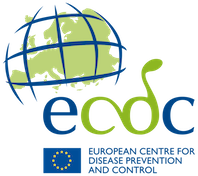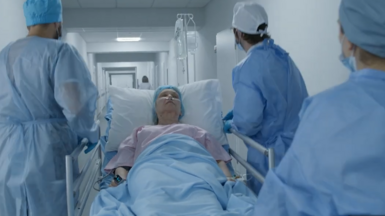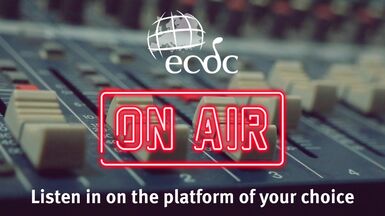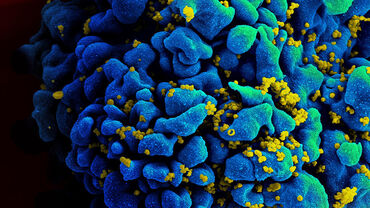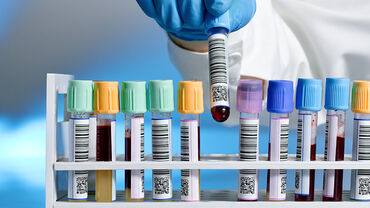Guidelines on the prevention of HIV transmission through substances of human origin
These guidelines support adherence to the European Union (EU) Regulation on standards of quality and safety for substances of human origin (SoHO) intended for human application. They provide evidence-based recommendations for assessing SoHO donors within the EU and European Economic Area (EEA) with the aim of preventing transmission of the human immunodeficiency virus (HIV) to recipients and offspring from medically assisted reproduction (MAR). HIV poses a significant risk to the safety of SoHO due to its potential transmission through blood, tissues, cells, and organs, as well as the lifelong consequences and severity of the disease. The sustained incidence of HIV in EU/EEA countries underscores the need for a strategic approach to prevent the transmission of HIV from donors via SoHO.
Executive summary
The guidelines are divided into three main sections corresponding to different types of SoHO: blood and blood components, tissues and non-reproductive cells, and reproductive cells. Solid organs and SoHO intended for industrial manufacturing are excluded from the scope, as is the protection of SoHO recipients and offspring from MAR other than from transmission of communicable diseases through SoHO.
The guidelines were developed by the European Centre for Disease Prevention and Control (ECDC) with the support of a panel composed of experts from EU/EEA countries. These experts provided specific technical and scientific advice to the ECDC. Expert meetings, supported by evidence synthesis, were conducted to inform guideline recommendations. To develop the statements in these guidelines and to support the expert panel, evidence synthesis based on structured literature searches was provided in a pathogen data sheet. This pathogen data sheet contains microbiological and clinical information on HIV, including virus and disease descriptions, epidemiology, test characteristics and testing approaches, and evidence of transmission through SoHO.
Download
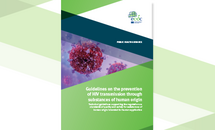
These guidelines support adherence to the European Union (EU) Regulation on standards of quality and safety for substances of human origin (SoHO) intended for human application, henceforth referred to as the Regulation. They aim to prevent communicable disease transmission from donors through SoHO in the European Union and European Economic Area (EU/EEA). Following these guidelines should be considered as a means to demonstrate compliance with the standards laid down in the Regulation to ensure a high level of quality and safety. For more information on the legal context, see the Legal background in the Annex.
In this document, SoHO are divided into three categories:
- Blood and blood components (e.g. whole blood, red blood cells, platelets, platelet-rich plasma, and plasma not intended for industrial manufacturing).
- Tissues obtained from deceased or living donors and non-reproductive cells (e.g. corneas, cardiovascular tissues, bones, tendons, skin, amniotic membrane, and hematopoietic progenitor cells), including reproductive tissues when used for allogeneic purposes.
- Reproductive cells (i.e. sperms and oocytes) and tissues, including embryos and reproductive tissues when used for autologous purposes.
These SoHO are used in medical procedures and treatments such as blood transfusions, transplantation therapy or medically assisted reproduction (MAR). They play a pivotal role in enhancing the quality of life and even saving the lives of patients suffering from severe medical conditions or injuries. Despite the life-saving potential of SoHO, the transmission of pathogens through SoHO could lead to infections in recipients and offspring from MAR, compromising their health and potentially leading to severe complications or even death. Ensuring that these substances are safe and free from avoidable risks, including the transmission of infectious agents, is paramount to protect the health and wellbeing of patients who receive them.
These evidence-based guidelines provide technical requirements and recommendations for evaluating SoHO donors, focusing on the risk of transmitting HIV to recipients and the offspring from MAR. These guidelines provide the minimum SoHO safety requirements to meet the standards in the Regulation. Countries may, however, apply more stringent measures.
These guidelines aim to provide:
- Requirements and recommendations on laboratory testing methods for screening donors for HIV.
- Requirements and recommendations on testing strategies for HIV.
- Recommendations on events to consider in donor assessment that may lead to laboratory testing limitations.
The content of these guidelines covers SoHO for allogeneic use (meaning the human application of SoHO collected from a person other than the SoHO recipient), as described in the Regulation.
The SoHO Regulation does not apply to solid organs; therefore, organs are outside the scope of these guidelines. Faecal microbiota and breast milk are not included in this iteration of the guidelines. SoHO for autologous use (meaning the human application of SoHO collected from a person to the same person) except for reproductive tissues for autologous use, SoHO for industrial manufacturing, such as plasma for fractionation, pre-analytical considerations, laboratory quality requirements, storage and detailed tests and algorithms for confirmatory testing, are also out of the scope of this iteration of the guidelines.
The current guidelines will be adapted at a later stage to cover the prevention of HIV transmission from donors through SoHO intended for industrial manufacturing, such as plasma for fractionation. The risk of HIV transmission through faecal microbiota and breast milk will be addressed separately. The plans for these adaptations will be published on the ECDC website.
Protection of SoHO recipients and the offspring from MAR other than from transmission of communicable diseases through the application of SoHO, quality requirements for the preparation, use and quality control of blood components, tissues, and cells are not covered in these guidelines. Instead, the European Directorate for the Quality of Medicine and Healthcare (EDQM) Guide to the preparation, use and quality assurance of blood components [3] and Guide to the quality and safety of tissues and cells for human application should be followed.
The target audience for the guidelines are professionals in the EU/EEA working in SoHO entities, as well as other professionals involved in the selection of blood, tissues, and cells donors. These guidelines may also serve as a reference for National Competent Authorities (NCA) for blood, tissues and cells, and MAR.
These guidelines are structured into three main sections for the following types of SoHO:
- Blood and blood components;
- Tissues and non-reproductive cells (living and deceased donors);
- Reproductive cells and embryos, and reproductive tissues for autologous use.
Preceding the SoHO-specific sections, the guidelines outline general requirements and recommendations that apply to all SoHO, which provides a common framework for the subsequent sections. Each SoHO-specific section is subdivided into subsections, addressing requirements and recommendations concerning testing of donors, consequences of test results, risk of exposure to HIV, and other aspects to consider for the described SoHO type. Each set of requirements and recommendations is accompanied by evidence, including expert opinion and justification to support the statements provided. Some of the statements are repeated in the ‘Evidence and justification’ sections but are included for clarity and are consistent with the list of statements in the ‘Requirements and recommendations’ sections.
Prior to the general and SoHO specific requirements and recommendations, the guidelines offer an overview of considerations for HIV which is relevant to SoHO safety, as well as a summary of the guideline development process applicable to all SoHO within these guidelines. A summary table outlining key requirements and recommendations is included in the ‘Executive summary’.
Detailed information on the guidelines development process, including methods for evidence collection and synthesis, as well as details on the ad hoc scientific expert panel, can be found at the end of this document in the Annex.
The statements in these guidelines are supported by evidence compiled in a pathogen data sheet for HIV (Pathogen data sheet, Annex). Additional details and references are available in the corresponding sections of the pathogen data sheet, as indicated in the guidelines.
In this document, requirements including the term ‘should’ describe technical requirements to meet the standards set out in the SoHO regulation. Recommendations and practical considerations including the terms ‘advised’ or ‘is advised’ or ‘considered’ are used to describe additional recommendations or suggestions to consider, but that are not required to meet these standards.
Publication data
Data
Pathogen data sheet - HIV
Data sheet to support the development of the ECDC technical guidelines on the prevention of Human Immunodeficiency Virus (HIV) transmission through Substances of Human Origin.
